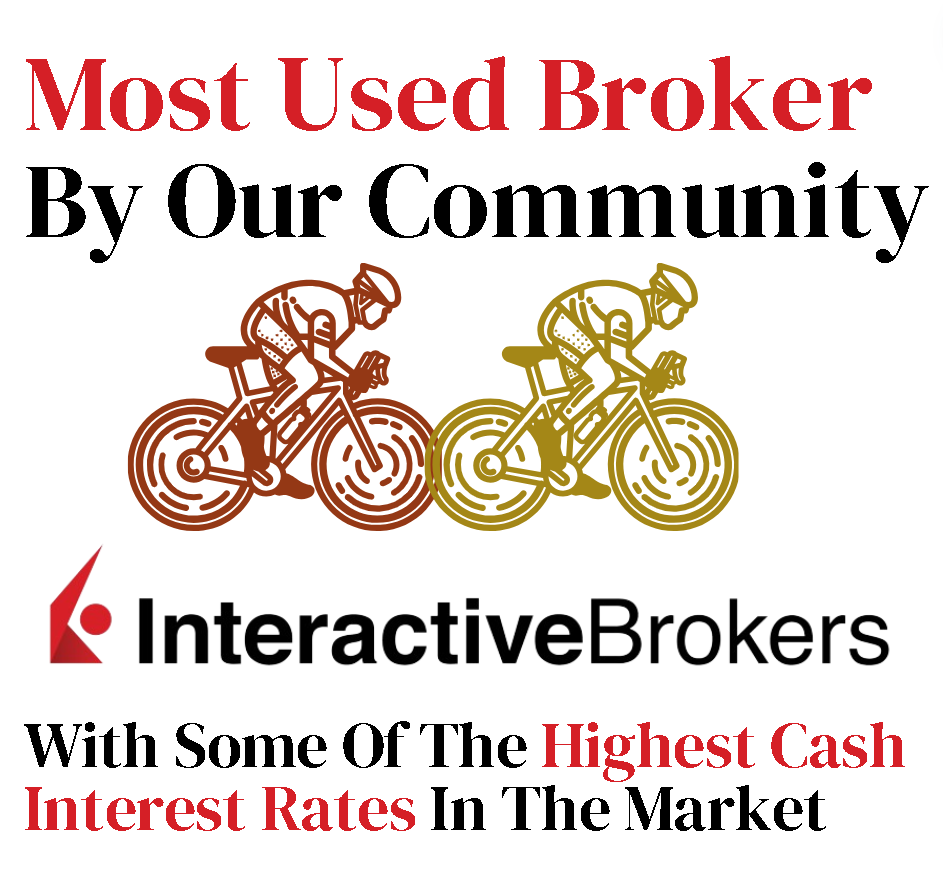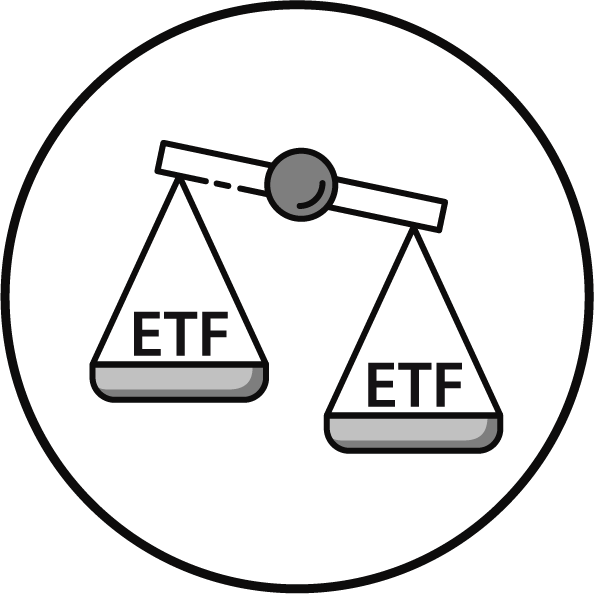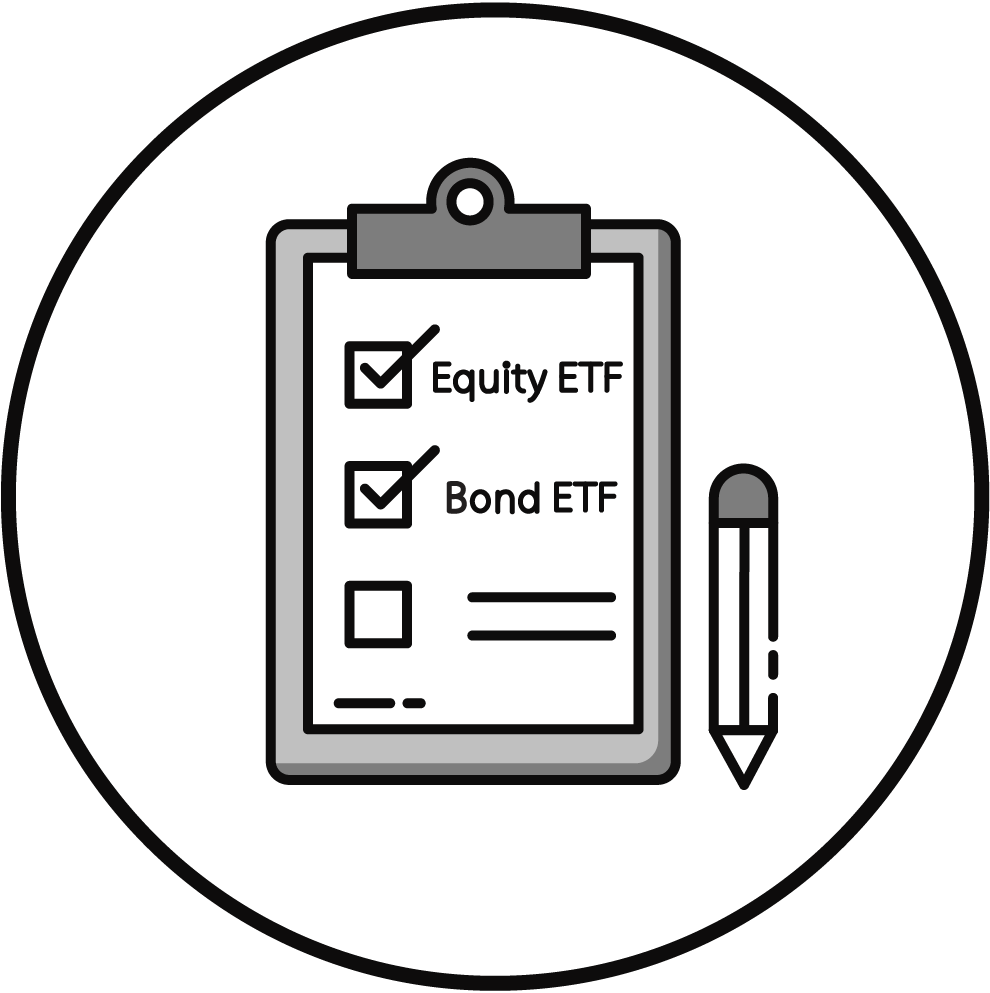A Banker’s Safari: Navigating The Zoo of Factors with Berkin and Swedroe’s Guide to Factor-Based Investing

Share:
For our readers itching to outdo the average ‘Golden Retriever’ or ‘Cyclist’ portfolio, craving an edge with more diversification and potential for higher-than-average returns, we highly recommend starting with Berkin and Swedroe’s “Your Complete Guide to Factor-Based Investing”.
This book navigates you through the ‘zoo’ of factors, retaining only the most pertinent and investable factors influencing returns, including the ones that accounted for most of Warren Buffett’s outperformance.
But beware, it’s not all smooth sailing. Risks and costs lurk around the corner, demanding knowledge and patience.
Designed for our ‘Banker’ readers with an advanced grasp on investing, a handy rule of thumb may be: if this review was read with ease, the book’s content will be a breeze.
KEY TAKEAWAYS
- Factors are specific company characteristics that have been shown by rigorous academic studies to lead to higher returns, both absolute and risk-adjusted.
- Factors explain the performance of legendary investors, like Warren Buffet and Benjamin Graham, to a large extent.
- There is a “zoo” of factors, but a few simple rules allow the authors to keep only seven that are worth investing in.
- Implementing a factor-based portfolio is non-trivial, especially in the UCITS universe where factor ETF availability is very limited. Unfortunately, this book does not provide much practical advice in this direction.
- Not all ETFs marketed as “smart beta” are in fact “smart,” sometimes they are just expensive “beta.” Rigorous due diligence is required from investors.
- Sticking to a factor-based portfolio can be psychologically difficult. From personal experience, seeing the small-cap value part of my portfolio being essentially flat while various glamour and meme stocks take off has been painful.
Here is the full analysis
What is in the book?
Andrew Berkin and Larry Swedroe are a power duo of evidence-based investing. Andrew is the Head of Research at Bridgeway Capital Management and Larry, a very prolific author, is the Head of Financial and Economic Research at Buckingham Strategic Wealth.
The book is split into two parts:
- An introduction to 7 key factors – that the authors consider worthy of consideration and academic evidence behind them.
- Appendices dealing with several additional factors – which did not quite make the cut due to inconclusive evidence, issues with dividend investing and potential risks of factor-based investing.
❤️🐶 Shop & Support - Celebrate our 4th anniversary! 4️⃣🎂
Spread the Golden Retriever Wisdom Across Europe & the UK 😎
Banker On Wheels is 4 years old! To celebrate our anniversary we have launched the official merchandise store – Shop.Bankeronwheels.com. You can now get your favourite Golden Retriever, or your factor tilt on a coffee mug or a T-Shirt while supporting our cause! All profits are reinvested into creating more educational content. Alternatively, you can also buy us a coffee. Thank you for all your support ❤️
What is Factor-Based Investing?
“Factors could be said to be a part of ‘Warren Buffet's secret sauce”
Equity factors are company characteristics that tend to lead to higher returns. For example, companies with small market capitalisations tend to have higher returns than companies with large market capitalisations.
Certain types of companies are exposed to the same financial risks, which means that their stocks tend to crash at the same time when these risks materialise. For them, risks cannot be diversified, and risk that is not diversifiable should carry a premium. Some factors can also be explained by behavioural biases that investors fall prey to.
The performance of legendary investors like Warren Buffet and Benjamin Graham can be explained to a large extent by the exposure of their portfolios to various factors, rather than their ability to pick specific individual stocks.
Of course, this does not detract from their achievements in any way, since they were intuitively using these concepts long before they were discovered by academic researchers.
Introduction to factor Investing (Common Sense Investing)
“Now we have a zoo of new factors.” – John Cochrane
Factors are typically discovered empirically by trying to identify companies with common characteristics whose returns cannot be explained well by existing factors.
This has led academic researchers to identify several hundreds of potential factors, making it impossible for the average investor to decide which factors should be considered.
Some could be due to chance and not actual factors. The authors of this book were amongst the first in the industry to come up with a six-point checklist that allows investors to cut through the noise. A worthwhile factor should:
- Add explanatory power to existing models and have provided a premium historically.
- Be persistent over time.
- Be pervasive across geographies and/or asset classes.
- Be robust to slight variations of their definitions.
- Be investable after considering additional costs.
- Be intuitive, i.e., there must be risk-based and/or behavioural explanations.
How are Factors Constructed?
Factors are Long/Short Portfolios
Factors, as described in the book, are constructed as long/short portfolios, which means that their returns are given by differences in returns between two portfolios. This would be the typical way Hedge Funds construct similar portfolios. For example:
- The US market factor – is defined as the difference between the return of the total US stock market (long leg) and the return of one-month Treasury bills (short leg).
- The size factor – is a long-short portfolio where the long leg is a portfolio of small company stocks and the short leg is a portfolio of large company stocks.
This means that all non-market factors are market-neutral, i.e., their return does not include the return of the market.
Drifting away from Market Index
It is important to note that, while a total stock market index contains companies with characteristics that are considered factors (e.g., small companies), it also always contains their polar opposites (e.g., large companies) so that the exposure to the “small company” factor is cancelled out. Thus, to get exposure to a certain factor, one must “tilt” towards stocks with certain characteristics, which means that one should own more stocks of these companies than are owned by the broad market, increasing portfolio concentration.
Long-term Evidence
Such constructed factors, are summarised below, based US market data from 1927-2015:
- Returns – Historical premia
- Chances of generating positive returns – Over a 10-year investment horizon
- Risk – as defined by standard deviation
- Risk-adjusted returns – using Sharpe Ratios
10-year Risk and Return Of Key Factors
| FACTOR | Premium (%) | Positive returns (%) | Standard deviation (%) | Sharpe ratio |
|---|---|---|---|---|
| Market | 8.3 | 90 | 20.6 | 0.40 |
| Size | 3.3 | 77 | 13.9 | 0.24 |
| Value | 4.8 | 86 | 14.1 | 0.34 |
| Momentum | 9.6 | 97 | 15.7 | 0.61 |
| Profitability/Quality | 3.1/3.8 | 85/89 | 9.3/10.0 | 0.33/0.38 |
| Term | 2.5 | 88 | 10 | 0.25 |
| Carry* | 7.4 | 98 | 11 | 0.67 |
* Averages for the carry factor in global equities, 10-year global fixed-income, commodities, and currencies.
To which asset classes do they apply?
Five Key Equity Factors
The next section, I briefly explain each factor, to which asset class it applies, and their risk-based and/or behavioural explanations.
Key Factors across Asset Classes
| Factor/Asset Class | Equities | Bonds | Other |
|---|---|---|---|
| Market | ✓ | ||
| Size | ✓ | ||
| Value | ✓ | ||
| Momentum | ✓ | ||
| Profitability/Quality | ✓ | ||
| Term | ✓ | ||
| Carry | ✓ | ✓ | ✓ |
Other Asset Classes include Commodities or Currencies.
Key 7 Factors Explained
The Shortlist - The 7 Surviving Factors
After filtering with the above criteria, only seven factors survive. They are all investable in the sense that there exist funds that can capture the premia even after their, usually higher, costs.
1. market
What is it?
The market factor is defined as the difference between the return of the total stock market and the return of the lowest-risk asset (e.g., one-month Treasury bills in the case of the US). It expresses the degree to which an asset tends to move with the broad market. By definition, a total market portfolio has a beta of one.
Why does it Exist?
The stock market has high correlation with economic cycles, thus being particularly risky in bad economic times. Since investors are generally risk-averse, they expect a high premium to suffer the high volatility and deep drawdowns that stock markets experience.
2. Size
What is it?
The size factor is constructed by subtracting the returns of the largest half of stocks from the returns of the smallest half of stocks. Since it is defined as a difference of returns between two sets of stocks, this factor, just like all factors that follow, is market-neutral. Smaller stocks usually have higher leverage, are less profitable, have high earnings and price volatility, and experience larger drawdowns.
Why does it Exist?
As such, smaller stocks are riskier than larger and more established companies. Smaller stocks also often get less attention from investors, leading to potential behavioural mispricings. An interesting anomaly that current factor models do not explain well is that small “growth” stocks that are expensive (e.g., they have a high book-to-market ratio) perform so poorly that they have been called the “black hole” of investing.
3. Value
What is it?
The value factor is traditionally defined by subtracting the returns of the 30% of stocks with the lowest book-to-market ratio from the returns of the 30% of stocks with the highest book-to-market ratio. Other value metrics, like the cash flow-to-price ratio and the earnings-to-price ratio, also provide economically meaningful and statistically significant premiums.
Why does it Exist?
Much like smaller companies, value companies tend to be in financial distress, they tend to have high leverage, and they tend to perform worse than the overall market in bad times. As such, they have higher risk overall. On the behavioural side, investors tend to be too optimistic about “glamorous” growth stocks and too pessimistic about “boring” value stocks.
4. Momentum
What is it?
The momentum factor is defined as the returns of the top 30% performers minus the bottom 30% performers in the last 12 months (excluding the last month where price reversals tend to happen).
Why does it Exist?
The explanations for the momentum factor are almost exclusively behavioural. For example, investors tend to underreact or overreact to new information, especially when that information is released slowly. Risk-based explanations tend to be counterintuitive as they need to explain why a stock with a high relative price is more risky than a stock with a low relative price, which is the opposite of what risk-based explanations for the value factor claim.
5. Profitability/Quality
What is it?
Profitability and quality are very closely related factors that can be measured using various metrics. A traditional definition is the difference between the 30% of stocks with the highest gross profits-to-assets and the 30% of stocks with the lowest gross profits-to-assets.
Why does it Exist?
Similarly to momentum, risk-based explanations for the profitability/quality factor are counterintuitive since more profitable companies seem safer. However, high profits might attract competition, giving some credibility to risk-based explanations. Behavioural explanations are more natural. For example, investors often expect high profitability to mean-revert faster than it actually does.
6. Term
What is it?
All previous factors are used to explain the returns of equities. The term factor, on the other hand, is one of the two main factors that explain the returns, with the second being the credit factor. The term factor is defined as the difference between the return on 20-year US government bonds minus 1-month US treasury bills.
Why does it Exist?
This factor has a very clear risk-based explanation: longer-duration bonds have higher price volatility and are more exposed to unexpected inflation.
7. Carry
What is it?
Carry is the tendency for high-yielding assets tend to provide higher returns than low-yielding assets. A simple example is a deposit in a currency that is different from the investors home currency but has higher interest rates.
Why does it Exist?
In this case the investor is exposed to is significant exchange rate risk, which gives an explanation for the return. This factor is by far the most pervasive, as it can be found in equities, bonds, commodities, and currency across the world.
to benefit from factors you need Diversification
Mixing Factors Increases Risk-adjusted returns
Factors’ magic lies in boosting risk/return via diversification. The authors recommend focusing on imperfectly correlated risk factors, and not thinking in asset classes like stocks and bonds, for portfolio diversification. All factors have low or negative market correlations and among each other. Their positive returns can dramatically enhance portfolios’ risk-adjusted returns, or Sharpe ratio. For instance, a portfolio with 25% exposure to market, size, value, and momentum factors achieved a 0.74 Sharpe ratio – outpacing any individual factor.
The Reality of Factor ETFs
This example portfolio is difficult to construct in practice because individual investors generally do not have access to long/short ETFs. But the concepts hold true for ETFs that include exposure to the market.
Factors help to understand the misconceptions about Dividend Investing
“Dividends are not a factor”
In the Appendix, the authors cover factors that are popular, but not worth consideration in their opinion. One noteworthy and potentially controversial example are high-dividend (or dividend-growth) stocks, which are very popular with investors:
- Dividends do not increase their predictive power of stocks – the performance of dividend stocks is explained almost entirely by other factors, like value and profitability.
- Dividend stocks reduce diversification – strategies arbitrarily exclude all stocks that do not pay dividends, which were 60% of US companies and 40% of international companies.
- High dividends increase costs – due to taxes and re-investment fees
Other examples of factors not worth consideration include the low-volatility factor, which is also explained well by other factors, and the default factor for bonds, whose premium has been very small compared to the costs associated with investing in it.
Potential Problems with Factor-Based Investing
"The most important quality for an investor is temperament, not intellect." – Warren Buffet
A factor-based portfolio has the potential to outperform the broad market. However, there are certain caveats associated with factor-based investing that need to be highlighted.
1. Will you be able to hold them?
A highly factor-diversified portfolio can underperform psychological benchmarks (e.g., the S&P 500 or an All-World index) for long stretches of time. This can be painful, and the risk is that the investor will abandon the strategy at the worst possible moment. This phenomenon is often called “tracking error regret.” Thus, factor investors need to be very patient, even more so than broad market investors with plenty of peers to commiserate with in bad times.
2. Will Factors disappear?
Another risk exists. Widely known factor premia could vanish if too many investors chase them. Studies show a 30% drop in premia post-publication, yet they remain viable. They can persist due to limits on arbitraging mispricings – shorting stocks is often restricted, costly, and has unlimited loss potential. Also, fund managers face career risks if they stray from benchmarks like the S&P 500, given that factors inevitably underperform at times.
3. It may be difficult to implement with Mutual Funds and ETFs
A final caveat has to do with the implementation of factor investing. Since factor funds are more sophisticated than simple market funds, they tend to have higher costs. Moreover, whether a fund captures a factor premium sufficiently well to be worth its additional costs highly depends on the portfolio construction rules the fund follows. As such, factor investors need to do more rigorous due diligence than typical investors.
Webinar with Larry on factor Investing
Rating Justification
This book is extremely good at what it sets out to do: summarize the state of academic research on factor-based investing and provide some implementation guidelines. It is a book that any advanced investor who is interested in factor-based investing should unarguably read.
A short review by David Leinweber on the back cover of the book claims that “it is jargon- and equation-free.” While the latter is certainly true, the former is more debatable. The authors provide a helpful glossary at the end of the book, they also assume a degree of familiarity with financial and accounting concepts, and they use relatively dry academic language in many parts of the book. As such, this is not a book for investors who are just starting out on their journey.
Is it Applicable to Europeans?
Factor-based investing is fully applicable to European investors, even though the availability of factor funds in Europe is limited. The only part of the book that is not useful for European is Appendix J where US-based mutual funds and ETFs are discussed for the various factors.
From Bankeronwheels.com
Get Wise The Most Relevant Independent Weekly Insights For Individual Investors In Europe & the UK
Liked the quality of our guides? There is more. Every week we release new guides, tools and compile the best insights from all corners of the web related to investing, early retirement & lifestyle along with exclusive articles, and way more. Probably the best newsletter for Individual Investors in Europe and the UK. Try it. Feel free to unsubscribe at any time.
🎁 In the first email, you can download a FREE comprehensive 2-page checklist to construct & monitor your portfolio and clean up your personal finances.
Next Steps - Factor ETFs
When I first read this book, I already had an idea of what factors are, but I was not familiar with all the academic literature that is summarized by the authors. I walked away feeling more confident about many aspects of factor investing, in particular the rigor with which this topic has been treated in the literature as well as the potential of most of the identified factor premia to persist in the future (even if they turn out to be somewhat lower than they have been in the past) and to add meaningful diversification.
I decided that it was worthwhile to add factors to my portfolio, but I was missing a more practical framework on how to select and how to analyse the available ETFs in order to target a specific level of exposure.
So, how do you cherry-pick the right ETFs? How do you fine-tune exposure? Stay tuned – we’ll be breaking it down in our upcoming articles.
Good Luck and Keep’em* Rolling!
(* Wheels & Dividends)

Weekend Reading – BlackRock Launches New iBonds, Truth About €1M Broker Insurance & BOW is 4 years old!

The Truth About €1 Million Broker Guarantees

4 Things I Learned In 4 Years Of Running A Finance Blog

Dodl By AJ Bell Review – AJ Bell’s Younger Brother

Vanguard LifeStrategy Review – A Retriever In A Babushka Doll

Why Do Portfolio Managers Care About Factors? It’s Not What You Think.
HELP US
🙋 Wondering why finding honest Investing Guidance is so difficult? That’s because running an independent website like ours is very hard work. If You Found Value In Our Content And Wish To Support Our Mission To Help Others, Consider:
- 📞 setting up a coaching session
- ☕ Treating us to a coffee
- 🐶 Purchasing Our Official Merchandise
- ❤️ Exploring Other ways to support our growth, both financially and non-financially.
DISCLAIMER
All information found here, including any ideas, opinions, views, predictions expressed or implied herein, are for informational, entertainment or educational purposes only and do not constitute financial advice. Consider the appropriateness of the information having regard to your objectives, financial situation and needs, and seek professional advice where appropriate. Read our full terms and conditions.






















